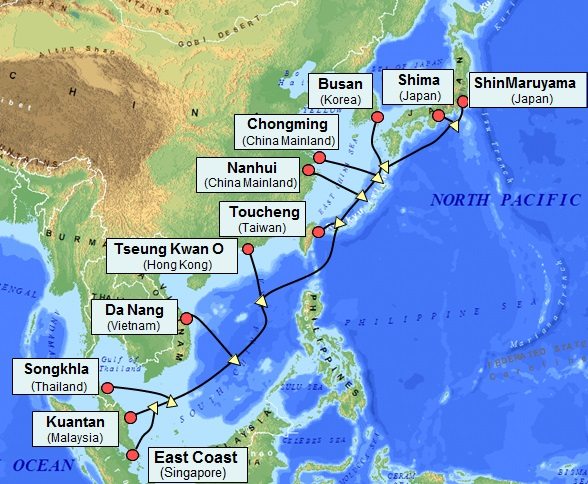The APG submarine cable is owned by a consortium of 12 APAC companies
NEC completed the construction of the Asia Pacific Gateway submarine cable system, which connects Japan, South Korea, China, Taiwan, Hong Kong, Vietnam, Thailand, Malaysia and Singapore.
The APG submarine cable is approximately 10,900 kilometers long and owned by a consortium of 13 members including CAT, China Mobile International, China Telecom, China Unicom, Chunghwa Telecom, KT Corporation, LG Uplus, NTT Communications, StarHub, Global Transit, Viettel and VNPT.
The cable also features 100-gigabit-per-second optical transmission capabilities said to deliver a capacity of more than 54 terabits per second.
“NEC is honored to have been selected as the supplier for APG,” said Shunichiro Tejima, EVP and head of NEC’s Telecom Carrier Business Unit. “We hope to see our partnership with the consortium further enhanced through NEC’s ability to provide real-time technical support for the operation and maintenance of this advanced submarine cable.”
NEC said it has laid more than 250,000 kilometers of submarine cable.
Omantel connects Africa to Asia with two cable systems
In related news, Omantel Wholesale is interconnecting the Gulf to Africa and Silk Road Gateway cable systems in a move to deliver networking between Asia and Africa.
SRG-1 connects Oman to Pakistan with onwards connectivity to Afghanistan, China, Iran, Turkmenistan and Tajikistan. G2A connects Oman to Somalia via two redundant landing stations in Puntland (Bosaso) and Somaliland (Berbera). The system provides onward connectivity to Ethiopia and will connect Kenya, Mogadishu and South Africa in later phases.
“We are the only provider in the world that is able to offer rapid access between Asia and Africa via geographically diverse routes,” said Omantel CEO Talal Said Al Mamari. “The development and interconnection of G2A and SRG-1 demonstrates our commitment to delivering ultra-low latency networking in unique and challenging markets. We are supporting the growth of trade between China and Africa with new diversity and high performance networks.”

